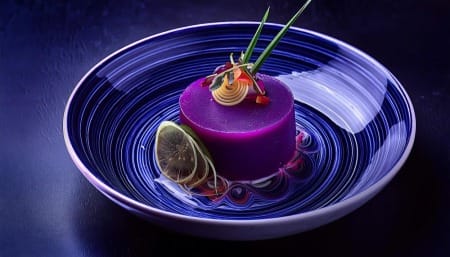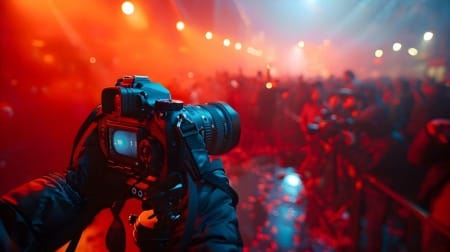Introduction
Commercial photography plays a vital role in today’s visually driven world, where businesses rely heavily on high-quality imagery to promote their products, services, and brands. Whether it’s for advertisements, online stores, print publications, or corporate marketing materials, the demand for professional photographers with expertise in commercial photography is ever-growing. Unlike other photography genres, commercial photography focuses on creating images with a clear purpose: to drive sales, enhance brand visibility, and engage consumers.
However, commercial photography is a broad field that encompasses various niches, each with its own specific techniques, tools, and challenges. From capturing the fine details of products to creating dynamic images that tell a brand’s story, commercial photographers need to master a range of skills depending on the type of work they specialize in. Some niches require technical precision, such as product or architectural photography, while others, like lifestyle or fashion photography, demand creativity and a deep understanding of visual storytelling.
As a commercial photographer, understanding the unique demands of each niche is crucial for success. Not only does it help you deliver the best results for your clients, but it also allows you to build a strong portfolio that showcases your expertise in a specific area. In this blog post, we’ll explore the top 7 commercial photography niches and provide practical tips on how to succeed in each one. Whether you’re just starting or looking to specialize, mastering these niches can set you apart in the competitive world of commercial photography.
1. Product Photography
What is Product Photography?
Product photography is one of the most common and essential niches within commercial photography. It involves capturing high-quality images of products, typically for advertising, e-commerce websites, catalogs, and promotional materials. The goal is to make the product look as appealing as possible, highlighting its features, details, and textures. Unlike other forms of photography, product photography is often done in a controlled studio environment, where lighting, angles, and backgrounds are carefully chosen to make the product stand out.

For e-commerce businesses and brands, compelling product images are crucial. Since customers cannot touch or interact with the items physically, they rely entirely on photos to make purchasing decisions. Therefore, professional product photography plays a key role in boosting sales and enhancing a brand’s credibility.
Key Requirements for Product Photography Success
To succeed in product photography, attention to detail is paramount. Commercial photography in this niche requires a thorough understanding of lighting, composition, and post-processing techniques. A sharp, well-lit image that highlights the product’s key features is critical. Photographers need to master the use of soft lighting to avoid harsh shadows and reflections, especially for reflective or textured items like glassware or jewelry.
A good macro lens is also essential for capturing close-up shots that reveal the finer details of a product. In product photography, every small feature—such as the stitching on a handbag or the texture of a fabric—can be a deciding factor for potential buyers.
Success Tips for Product Photography
- Invest in Proper Equipment: High-quality lenses, controlled lighting (such as softboxes), and backdrops are essential to achieve clean, professional results.
- Post-Processing Mastery: Retouching and enhancing images in post-production can bring out the best in the product.
- Understand Client Needs: Always collaborate closely with your clients to ensure the photography aligns with their brand’s style and marketing objectives.
Mastering product photography can open many doors in commercial photography, making you a valuable asset to brands that rely on high-quality visuals to sell their products.
2. Fashion Photography
What is Fashion Photography?
Fashion photography is a vibrant and dynamic niche within commercial photography that focuses on showcasing clothing, accessories, and models in ways that capture both the beauty of the products and the brand's identity. This type of photography is often used in magazines, advertising campaigns, online stores, and social media, and it plays a crucial role in shaping fashion trends and consumer behavior.

Fashion photography goes beyond simply capturing an image—it’s about creating a visual story that resonates with the brand's audience. This often means working with a team of stylists, makeup artists, models, and art directors to achieve the desired look and feel of the shoot. Whether shooting in a studio or on location, fashion photographers need to have a strong sense of creativity and an ability to adapt to different styles and concepts. In the world of commercial photography, fashion stands out as one of the most demanding but rewarding niches due to its fast-paced and trend-driven nature.
Key Requirements for Fashion Photography Success
To succeed in fashion photography, a combination of technical skills and creative vision is essential. Photographers must be adept at working with artificial lighting setups, as well as natural light, depending on the shooting environment. Posing models effectively and ensuring they display the clothing or accessories in the best possible way is a critical aspect of fashion photography.
Additionally, an understanding of the latest fashion trends, fabrics, and textures is vital to ensure the images feel current and relevant. Fashion photographers must also have the ability to evoke emotions and tell a brand's story through images, which can range from bold and dramatic to subtle and elegant.
Success Tips for Fashion Photography
- Collaborate with a Strong Team: Work closely with stylists, models, and makeup artists to create a cohesive look that reflects the brand’s vision.
- Stay Trend-Savvy: Keep up-to-date with the latest fashion trends, styles, and lighting techniques to maintain relevance in this fast-moving niche.
- Build a Strong Portfolio: A diverse portfolio showcasing different fashion styles, from high-end editorial to lifestyle, will attract a wider range of clients.
Mastering fashion photography in the realm of commercial photography allows photographers to work with prestigious brands and publications, making this niche both lucrative and creatively fulfilling.
3. Food Photography
What is Food Photography?
Food photography is a specialized niche within commercial photography that focuses on capturing the essence, appeal, and visual deliciousness of food. Whether it’s for a restaurant menu, a food blog, cookbooks, advertisements, or social media campaigns, food photography plays a vital role in making dishes look appetizing and enticing to potential customers. A well-executed food photograph can influence a person’s decision to visit a restaurant, try a recipe, or purchase a food product.

Unlike other forms of commercial photography, food photography often involves significant planning and styling to ensure the food looks its best. This might include working with a food stylist to arrange the dish in an attractive way, selecting the right props and backgrounds to complement the food, and paying attention to every detail, from the texture of the dish to the way light interacts with it.
Key Requirements for Food Photography Success
Succeeding in food photography requires both technical expertise and a deep understanding of composition and lighting. One of the most important aspects of food photography is lighting. Photographers must know how to use natural light to their advantage or, if working in a studio, mimic soft, diffused daylight to make the food appear fresh and vibrant. Harsh lighting can cause unappetizing shadows or highlights, so achieving soft, flattering light is essential.
In addition, composition plays a significant role in food photography. Using elements like leading lines, symmetry, and the rule of thirds can help draw attention to the food and make it more visually appealing. Props such as cutlery, napkins, or rustic surfaces can also add context and enhance the overall image without overwhelming the main subject.
Success Tips for Food Photography
- Invest in Lighting Equipment: If natural light isn’t available, invest in softboxes or diffusers to replicate soft daylight, which works best for food photography.
- Work with a Food Stylist: If possible, collaborate with a food stylist who can ensure the dish is presented in its most appealing way.
- Keep Compositions Simple: Avoid cluttering the frame; allow the food to be the star by using minimal props and backgrounds.
By mastering the art of food photography in the realm of commercial photography, you can help restaurants, brands, and publications showcase their dishes in the most mouthwatering way, which can directly impact their sales and customer engagement.
4. Real Estate and Architectural Photography
What is Real Estate and Architectural Photography?
Real estate and architectural photography is a critical niche in commercial photography, dedicated to capturing visually appealing images of properties, buildings, and interiors. These photographs are often used in real estate listings, architectural magazines, or promotional materials for hotels, resorts, and commercial properties. The goal of this type of photography is to showcase the design, structure, and ambiance of a space in a way that appeals to potential buyers or clients.

Unlike other commercial photography niches, architectural photography requires a keen eye for composition, symmetry, and perspective. Photographers must understand how to represent large spaces accurately while highlighting the unique features that make a property stand out, whether it's a residential home, a skyscraper, or a commercial interior. The challenge is to make the space feel inviting, spacious, and visually impressive, all while maintaining accuracy in the representation of the property.
Key Requirements for Real Estate and Architectural Photography Success
To succeed in real estate and architectural photography, technical precision is paramount. Commercial photography in this niche requires a solid understanding of how to use wide-angle lenses to capture as much of a room or building as possible without distorting its structure. The ability to work with lighting is also crucial, as balancing natural and artificial light can make a significant difference in how the property is perceived.
In addition, architectural photographers must have a strong grasp of post-processing techniques, such as high dynamic range (HDR) photography, which combines multiple exposures to create a balanced image where both interior and exterior elements are visible and well-lit.
Success Tips for Real Estate and Architectural Photography
- Invest in a Wide-Angle Lens: A wide-angle lens is essential for capturing expansive interiors and architectural exteriors without distorting the lines of the structure.
- Master HDR Photography: Use HDR techniques to balance the lighting in both bright exteriors and darker interior spaces.
- Focus on Composition: Use leading lines, symmetry, and perspective to highlight the architectural features and make spaces feel open and inviting.
Mastering real estate and architectural photography within commercial photography can open doors to working with real estate agents, architects, and developers, offering lucrative and rewarding opportunities to showcase stunning spaces.
5. Corporate Photography
What is Corporate Photography?
Corporate photography is a vital niche within commercial photography that focuses on capturing professional images for businesses and corporations. This type of photography encompasses a wide range of work, including corporate headshots, team photos, workplace environments, corporate events, and marketing materials. The purpose of corporate photography is to enhance a company's image, portray professionalism, and strengthen its brand identity through high-quality visuals.

In today’s digital age, businesses rely heavily on visual content for their websites, annual reports, press releases, and social media. Professional corporate photography helps companies build credibility, create a strong visual presence, and effectively communicate their values to clients and employees. Whether it’s capturing the CEO’s portrait, documenting a company event, or showcasing the workspace, corporate photography plays a key role in maintaining a company’s professional image.
Key Requirements for Corporate Photography Success
Success in corporate photography requires professionalism and the ability to adapt to various environments and client needs. Corporate photographers must be skilled in creating clean, polished images that align with the company’s branding and corporate culture. This often involves working on location, setting up portable lighting, and creating a comfortable environment for corporate portraits or event coverage.
In addition, understanding the specific requirements of the business is crucial. Corporate photography often demands consistency, especially when producing images for large teams or across multiple events. A corporate photographer must be able to deliver consistent quality in lighting, composition, and style to maintain brand uniformity across all images.
Success Tips for Corporate Photography
- Invest in Portable Lighting: Corporate shoots often take place on location, so having a reliable portable lighting kit is essential for maintaining consistency in different settings.
- Build Rapport with Clients: Make your subjects feel at ease, particularly during headshot sessions, as relaxed, confident expressions can enhance a company’s professional image.
- Consistency is Key: Ensure that your style, lighting, and composition remain consistent across multiple shoots to align with the company’s branding.
Corporate photography in the broader commercial photography field offers steady, lucrative work by serving businesses that need professional, high-quality imagery to support their marketing, branding, and internal communication efforts.
6. Lifestyle and Advertising Photography
What is Lifestyle and Advertising Photography?
Lifestyle and advertising photography is a compelling and creative niche within commercial photography that focuses on capturing people and products in real-life scenarios to promote a brand or convey a specific message. This type of photography is often used in marketing campaigns, social media ads, product promotions, and brochures to connect with the target audience on a more personal level. The goal is to tell a story through images that resonate emotionally with viewers, making them feel connected to the product or service being advertised.

Unlike traditional product or fashion photography, lifestyle photography incorporates models and settings that reflect a more natural, everyday environment. Whether it’s a family enjoying a meal in their kitchen, a group of friends wearing a brand’s clothing, or someone using a particular product in a relatable setting, lifestyle photography aims to highlight how the product fits seamlessly into the consumer’s life. This type of imagery is particularly popular in social media marketing and online ads, where authenticity and storytelling drive engagement.
Key Requirements for Lifestyle and Advertising Photography Success
Succeeding in lifestyle and advertising photography within the commercial photography space requires strong storytelling skills and the ability to capture natural, candid moments. Photographers in this niche need to work with models or everyday people in ways that feel authentic while still ensuring that the product or service remains the focal point of the image.
Additionally, understanding a brand’s target audience is essential. The images need to reflect the values, aesthetics, and lifestyle aspirations of the intended consumers. Lighting, composition, and location are also critical factors, as they must enhance the overall mood and message of the campaign without overshadowing the product or experience being promoted.
Success Tips for Lifestyle and Advertising Photography
- Focus on Authenticity: Encourage natural interactions between models to capture candid moments that resonate with the target audience.
- Understand the Brand’s Vision: Collaborate closely with the brand’s creative team to ensure that the photos align with the company’s messaging and target demographic.
- Use Relatable Settings: Choose locations and backdrops that feel authentic and reflect the everyday scenarios in which the product would be used.
Mastering lifestyle and advertising photography as part of commercial photography allows photographers to produce engaging, emotion-driven images that help brands connect with their
7. Event Photography
What is Event Photography?
Event photography is a dynamic and fast-paced niche within commercial photography that focuses on capturing the highlights, atmosphere, and key moments of various events. This can include corporate events, conferences, trade shows, product launches, charity galas, and even promotional events. The primary goal of event photography is to document the experience in a way that reflects the event’s purpose, mood, and overall energy while providing high-quality images for marketing, internal use, or press coverage.

Unlike more controlled environments in commercial photography, event photography often requires photographers to think on their feet, adapt quickly to different lighting conditions, and be ready to capture candid moments as they unfold. The images not only serve as a record of the event but also play a critical role in promoting future events or showcasing a company’s culture and activities to potential clients and partners.
Key Requirements for Event Photography Success
Success in event photography requires a combination of technical expertise, fast decision-making, and excellent communication skills. Photographers must be skilled in working with varying light conditions, especially when events are held in low-light environments like banquet halls or dimly lit conference centers. Being able to quickly adjust camera settings, such as ISO, aperture, and shutter speed, is crucial to capturing sharp, well-exposed images on the fly.
Moreover, event photographers need to have an eye for capturing both candid moments and staged shots, such as group photos or key speeches. Anticipating important moments—whether it's the keynote speaker’s big entrance or a spontaneous interaction between guests—can make a big difference in the quality of the final set of images.
Success Tips for Event Photography
- Be Prepared for Low-Light Settings: Invest in fast lenses (like f/1.8 or f/2.8) and portable flash systems to handle indoor, low-light conditions.
- Capture Key Moments: Focus on important highlights such as speeches, awards, or significant interactions while also documenting candid moments that showcase the event’s atmosphere.
- Have a Quick Post-Processing Workflow: Since event images are often needed immediately, develop an efficient workflow for editing and delivering the photos promptly.
Event photography, as part of commercial photography, is a rewarding niche that offers photographers the chance to capture memorable experiences and deliver valuable content that companies and organizations can use for marketing, promotion, and engagement.
Conclusion
Commercial photography encompasses a diverse range of niches, each with its own unique demands, techniques, and opportunities for growth. From product and fashion photography to food, real estate, and event photography, mastering any of these areas can open doors to a wide array of clients and projects. The key to success in commercial photography lies in understanding the specific requirements of each niche and honing the skills needed to excel in that particular field.
Whether you're capturing the intricate details of a product, showcasing the architectural beauty of a building, or telling a compelling brand story through lifestyle images, each type of commercial photography offers exciting challenges and creative potential. Success in this field requires more than just technical expertise—it also involves working closely with clients, understanding their vision, and delivering consistent, high-quality results that align with their marketing objectives.
As you explore these top 7 commercial photography niches, it’s important to experiment, find what you’re passionate about, and continuously develop your skills. Specializing in one or more of these areas can help set you apart in the competitive photography industry and build a portfolio that attracts high-profile clients. Ultimately, by mastering these niches, you can create a thriving career in the world of commercial photography.
Thank you for visiting our site and being part of this journey with us! We rely on the generous support of visitors like you to continue providing high-quality. Your donation, no matter the size, helps us maintain the website and create more valuable resources for everyone.


